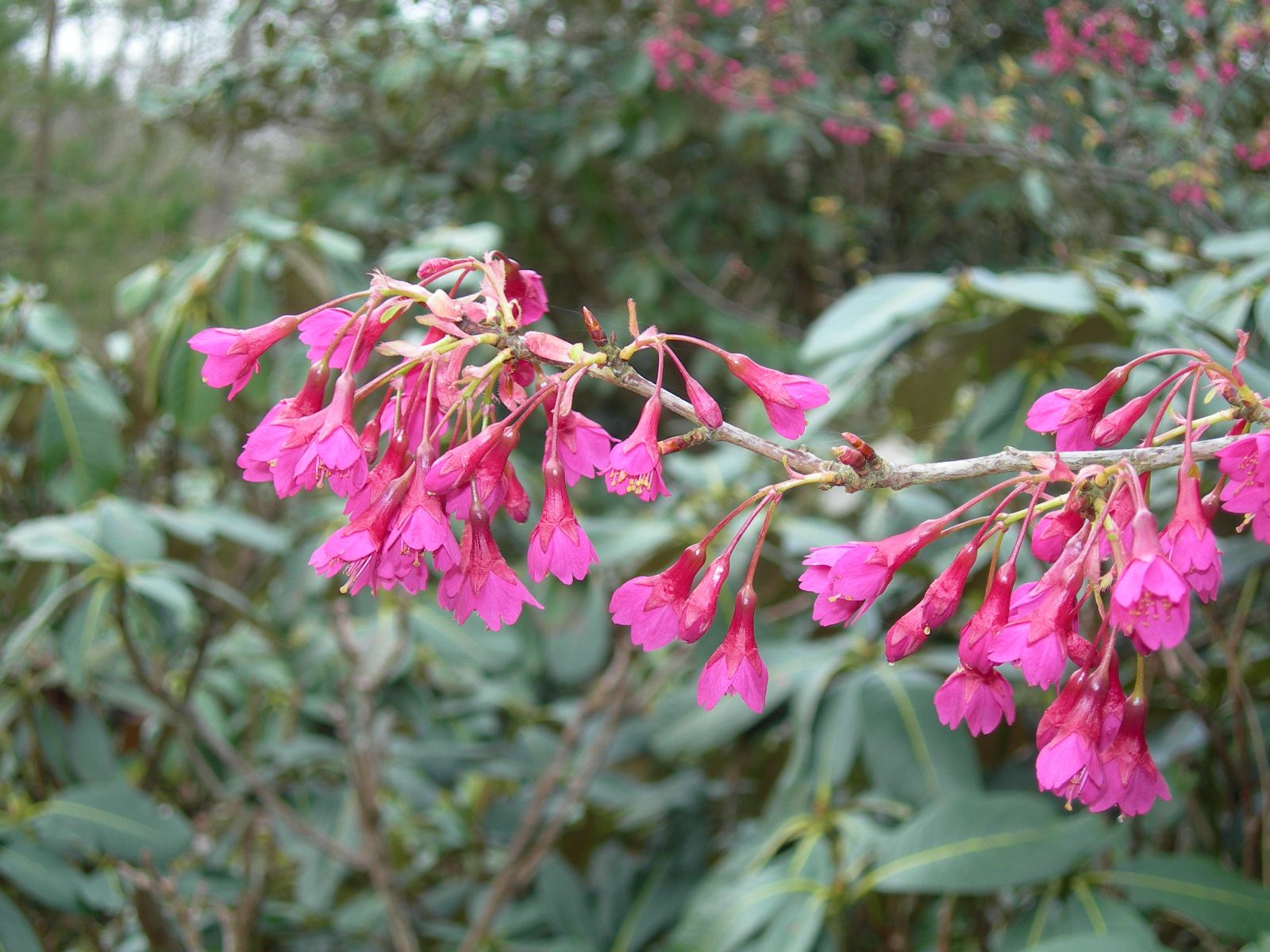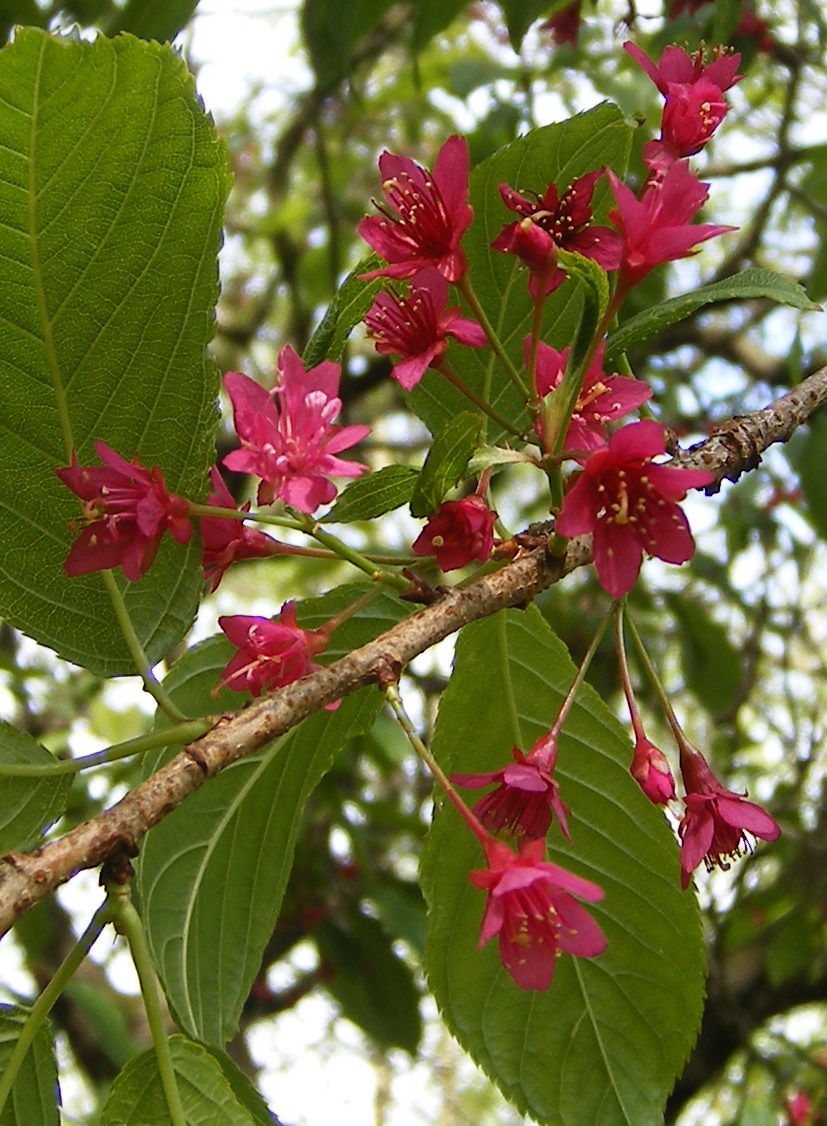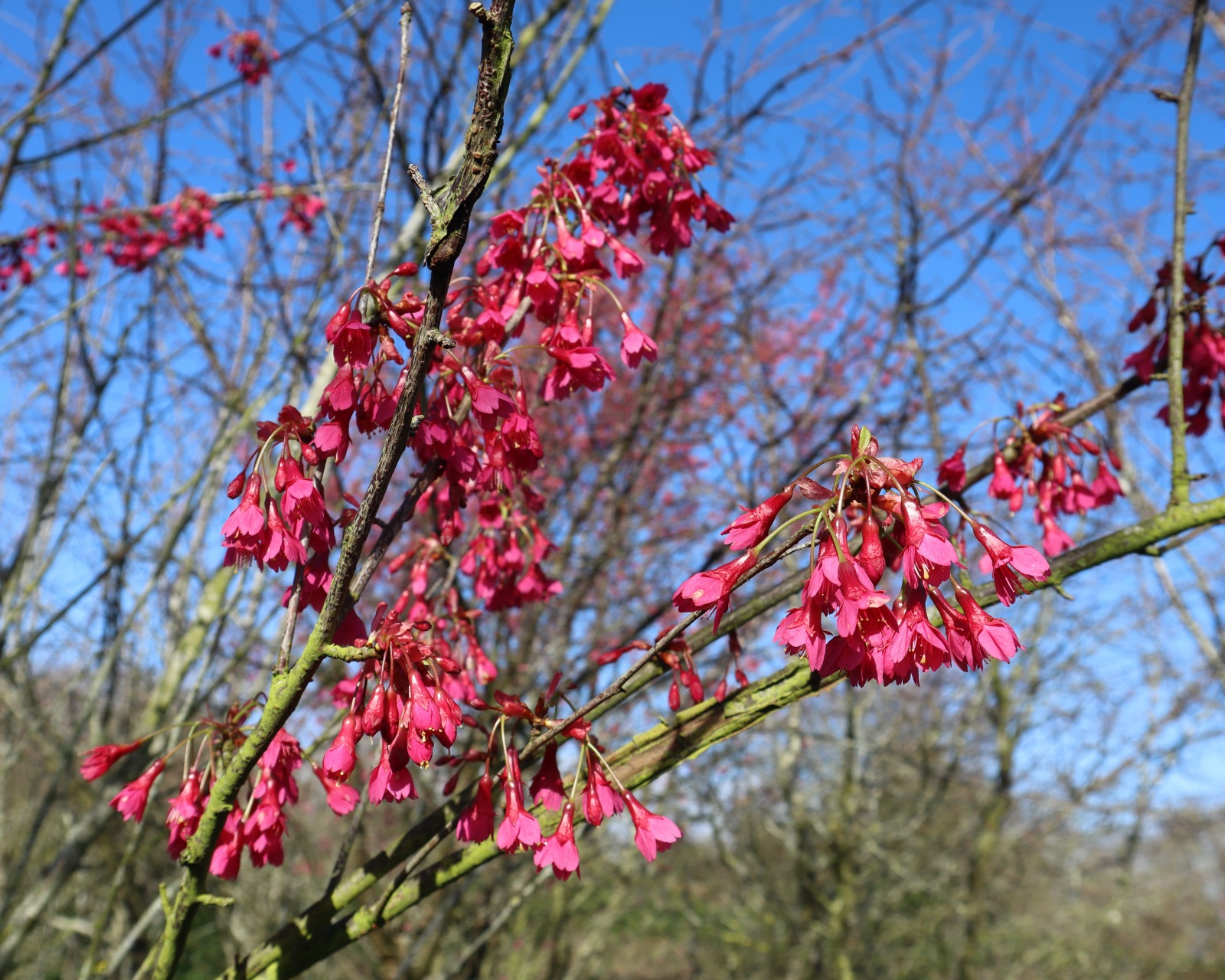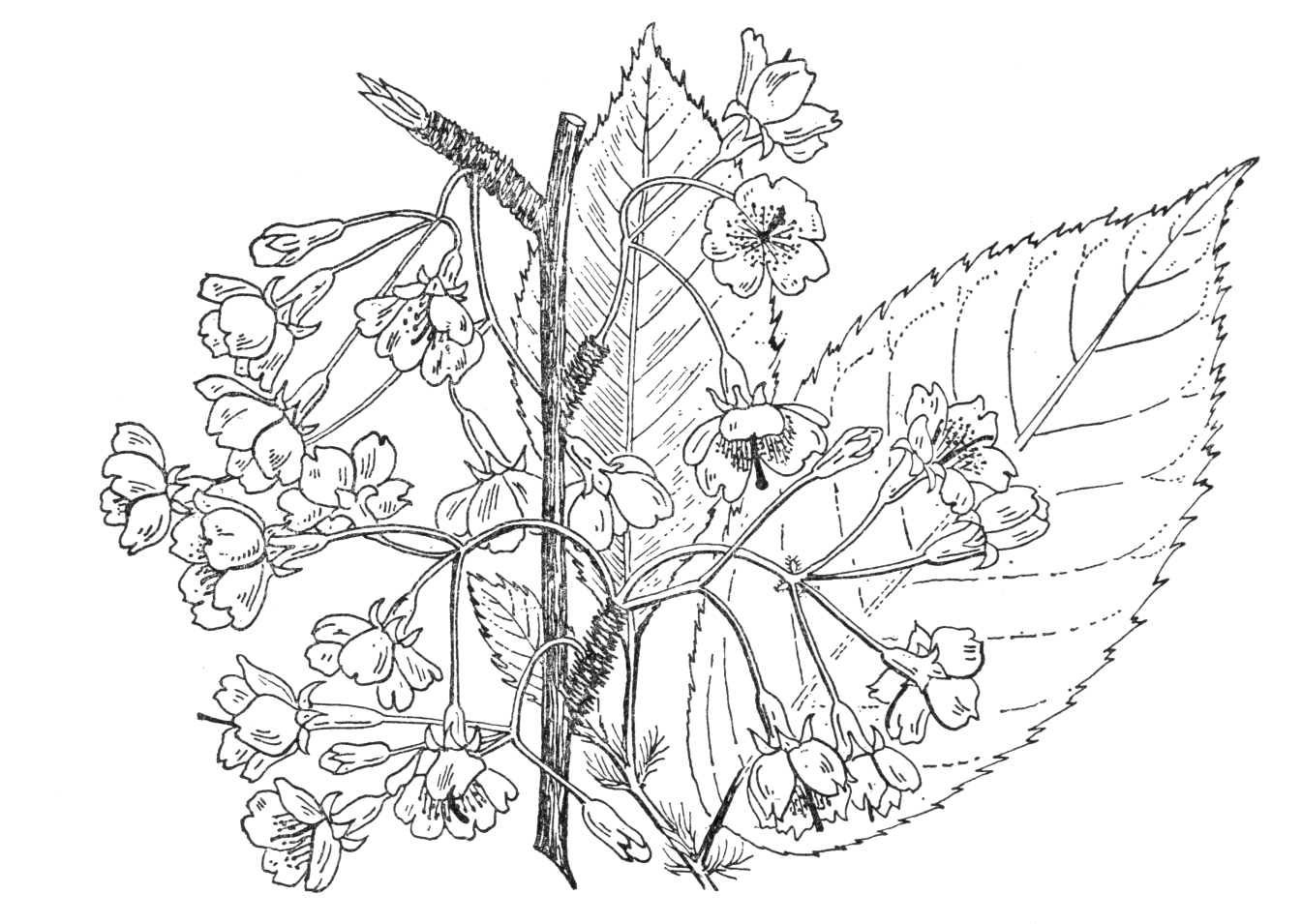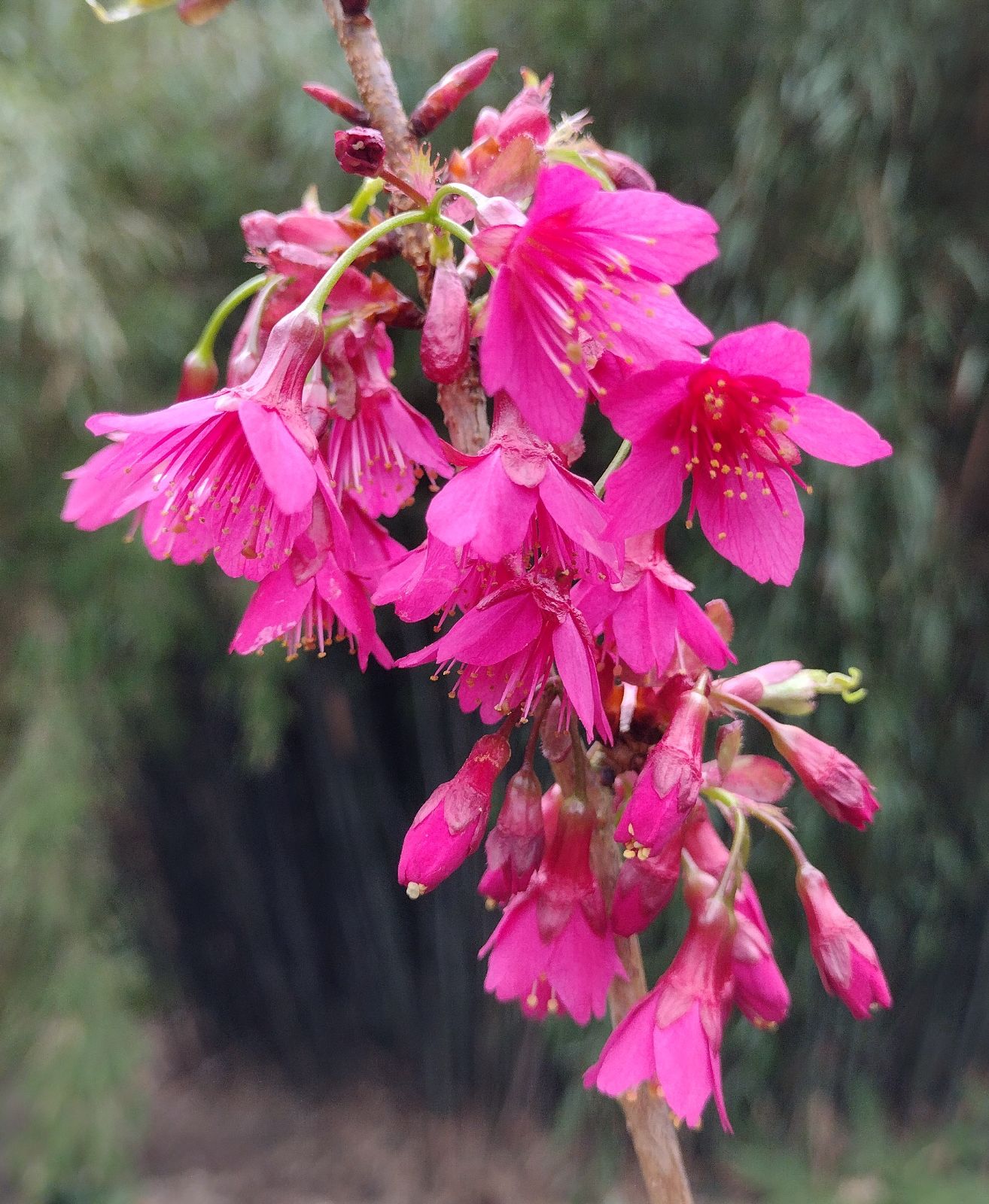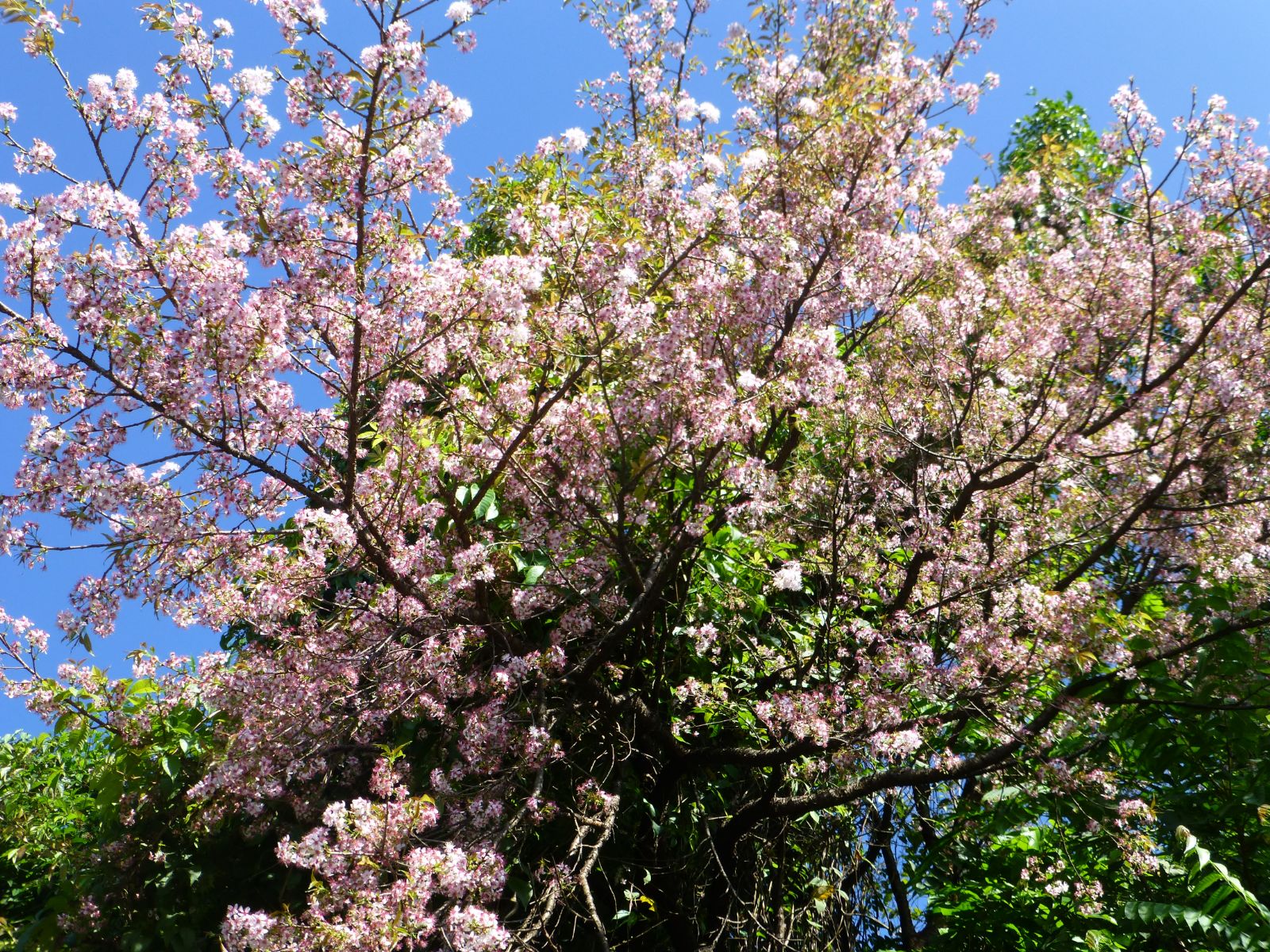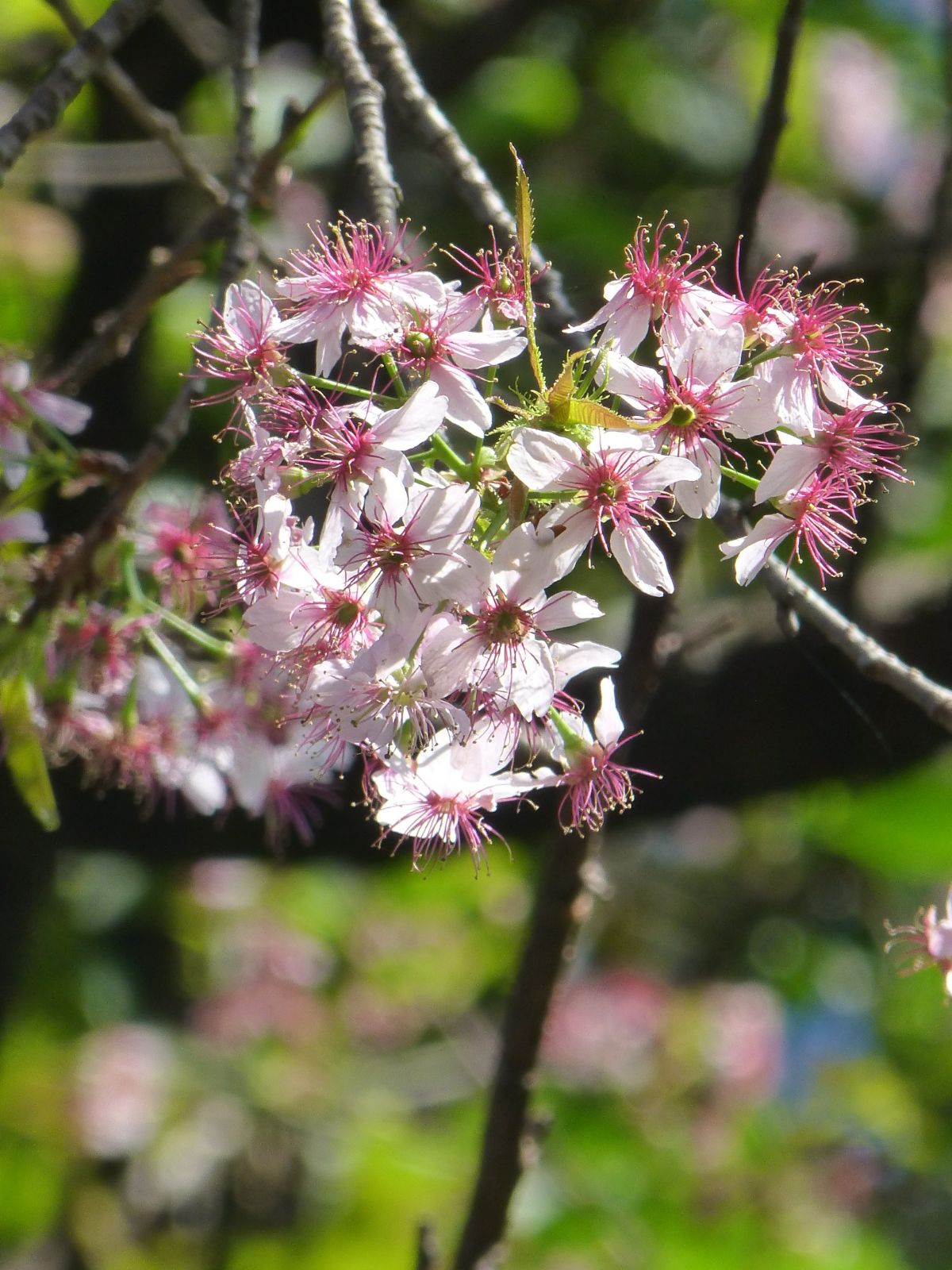Prunus campanulata
Credits
Article from Bean's Trees and Shrubs Hardy in the British Isles
Recommended citation
'Prunus campanulata' from the website Trees and Shrubs Online (treesandshrubsonline.
Genus
Common Names
- Bell-flowered Cherry
Infraspecifics
Other taxa in genus
- Prunus alleghaniensis
- Prunus americana
- Prunus × amygdalo-persica
- Prunus amygdalus
- Prunus angustifolia
- Prunus apetala
- Prunus arabica
- Prunus argentea
- Prunus armeniaca
- Prunus avium
- Prunus besseyi
- Prunus brigantina
- Prunus canescens
- Prunus cantabrigiensis
- Prunus cerasifera
- Prunus cerasus
- Prunus cocomilia
- Prunus concinna
- Prunus conradinae
- Prunus consociiflora
- Prunus cornuta
- Prunus cuthbertii
- Prunus dasycarpa
- Prunus davidiana
- Prunus × dawyckensis
- Prunus dielsiana
- Prunus domestica
- Prunus dulcis
- Prunus emarginata
- Prunus × fontanesiana
- Prunus fruticosa
- Prunus glandulosa
- Prunus grayana
- Prunus himalaica
- Prunus hortulana
- Prunus humilis
- Prunus ilicifolia
- Prunus incana
- Prunus incisa
- Prunus jacquemontii
- Prunus kansuensis
- Prunus lannesiana
- Prunus laurocerasus
- Prunus litigiosa
- Prunus lusitanica
- Prunus maackii
- Prunus mahaleb
- Prunus maritima
- Prunus maximowiczii
- Prunus microcarpa
- Prunus mira
- Prunus mugus
- Prunus mume
- Prunus nigra
- Prunus nipponica
- Prunus orthosepala
- Prunus padus
- Prunus pensylvanica
- Prunus persica
- Prunus pilosiuscula
- Prunus prostrata
- Prunus pumila
- Prunus rufa
- Prunus salicina
- Prunus sargentii
- Prunus serotina
- Prunus serrula
- Prunus serrulata
- Prunus sibirica
- Prunus × sieboldii
- Prunus simonii
- Prunus sogdiana
- Prunus speciosa
- Prunus spinosa
- Prunus ssiori
- Prunus subcordata
- Prunus subhirtella
- Prunus takesimensis
- Prunus tangutica
- Prunus tenella
- Prunus tomentosa
- Prunus triloba
- Prunus virginiana
- Prunus × yedoensis
A deciduous cherry tree up to 30 ft high, of graceful habit, free from down in all its parts; year-old shoots freely marked with warts. Leaves ovate, oval or slightly obovate, slender-pointed, broadly wedge-shaped to slightly heart-shaped at the base, margins regularly set with fine forward-pointing or incurved teeth, 21⁄2 to 4 in. long, 1 to 13⁄4 in. wide, nerves in six to eight pairs; stalks 1⁄2 to 3⁄4 in. long. Flowers 3⁄4 in. wide, produced in March and April, two to six together on main-stalks 1 to 11⁄2 in. long that bear usually a couple of leaf-like bracts; individual flower-stalks 1⁄2 to 3⁄4 in. long. Petals of a beautiful deep rose, roundish ovate, notched at the apex, 1⁄4 in. wide. Calyx-tube rose-coloured except at the base, the reflexed, sparsely toothed lobes also rosy; stamens deep rose, anthers yellow. Fruits described as red, conical, 5⁄8 in. long, scarcely 1⁄2 in. wide. Bot. Mag., t. 9575.
Native of Formosa and S. China and thought to be wild also in the Ryukyu Islands. The bell shape of the flowers to which the specific name refers seems to be characteristic of them in a young state only. It appears to have been introduced by Messrs Sander of St Albans in 1899, but owing to its tenderness was lost and not seen again until Wilson took plants from Japan to the Arnold Arboretum in 1915. Its flowers are, perhaps, the most highly coloured of all the genuinely wild types. Near London it needs the protection of a wall, but succeeds in the open ground in the mildest parts. At Kew it flowers freely in the Temperate House in March or even earlier. Award of Merit 1935.
'Felix Jury'
P cerasoides D. Don
Synonyms
P. puddum Roxb
This species, which belongs to the same group as P. campanulata, is represented in cultivation by var. rubea Ingram, which ranges from Kashmir along the Himalaya, through upper Burma to W. Yunnan. In the wild it makes a tall tree, bearing its rich carmine flowers well before the leaves in February or March. It was introduced to Britain by Kingdon Ward in 1931 (KW 9314) and flowered at Highdown in Sussex in 1938. Unfortunately in our climate the flowers are paler coloured than in the wild, and are borne with the unfolding leaves. Twigs reddish brown, glabrous. Leaves 2{1/2} to 4{1/2} in. long, oblong-elliptic acuminate or caudate, almost glabrous, bright green above, conspicuously veined, with simple, gland-tipped serrations. Flowers more or less bell-shaped, two to four in umbellate or shortly pedunculate clusters. Calyx-tube glabrous, bright crimson, its lobes ciliate and of the same colour. Bot. Mag., n.s., t. 12. See also: Kingdon Ward, Plant Hunter’s Paradise, pp. 149–50, and Journ. R.H.S. Vol. 71, pp. 321 and 74, p. 289.

